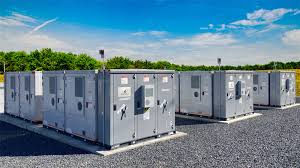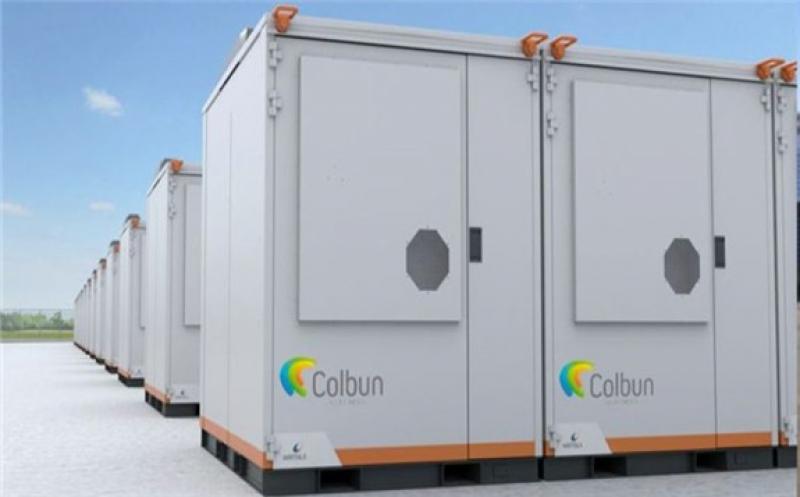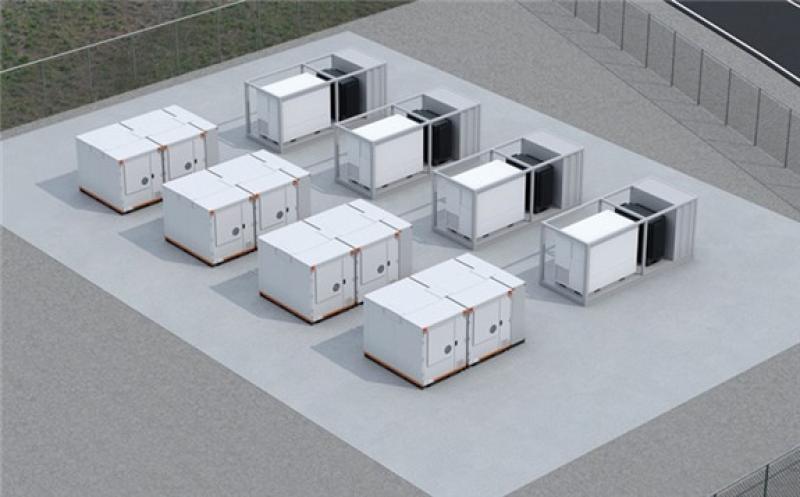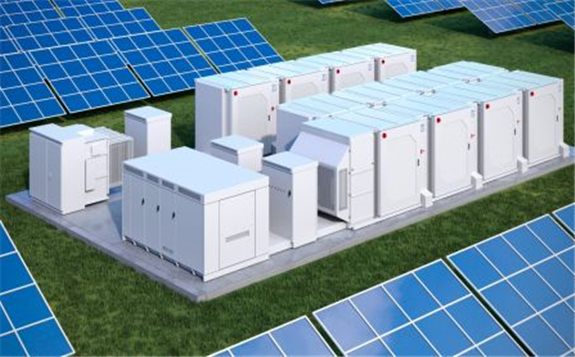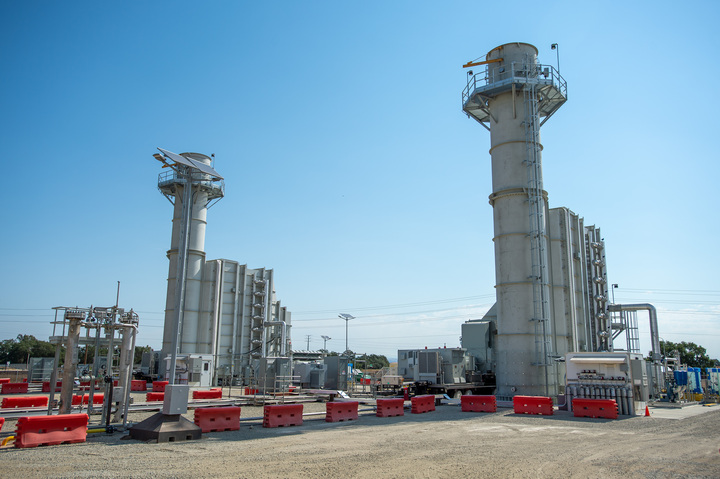
1. DWR’s Roseville site, located in Roseville, California, has two GE TM2500 gas turbines. Courtesy: Jonathan Wong / California Department of Water Resources
“GE’s aeroderivative mobile technology, typically used for emergency power, represents a perfect complement to renewable energy and peaking power use cases worldwide,” Clive Nickolay, CEO of GE Gas Power’s Aeroderivative business line, said in a statement issued to POWER. “We’re excited about GE’s efforts to provide power plant operators with a technical solution that will allow them to quickly install peak power when needed, while drastically reducing NOx and CO emissions levels to low single digits.”
Units Added for Emergencies
DWR brought the four units at Yuba City and Roseville online in September 2021. The move was made in response to a July 2021 emergency proclamation by Gov. Gavin Newsom’s administration, in which DWR was directed to work with the California Energy Commission (CEC) to develop additional energy capacity to safeguard the state’s grid from the impacts of climate-induced drought, wildfires, and extreme heat waves.
“DWR’s expertise as the fourth-largest power producer in California allowed us to work quickly with the CEC, the California Independent System Operator [CAISO], and our regional partners in Yuba City and Roseville to bring these units online,” DWR Deputy Director for the State Water Project Ted Craddock said in a statement issued at the completion of the project.
The generators are intended for use under emergency conditions determined by the CAISO under a contingency plan developed in coordination with the CEC and the California Public Utilities Commission. The plan includes a range of measures to address potential energy supply shortfalls, including Flex Alerts, coordination with adjacent balancing authorities, demand reduction strategies, and bringing online new resources such as the temporary generators. The Yuba City units are operated by Calpine and the Roseville units are operated by Roseville Electric.
Cutting Emissions
GE said the technical solution it added includes engineering studies for the integration and installation of a selective catalytic reduction (SCR) technology system, which is a proven and effective solution to limit post-combustion emissions. The technology works by removing common emissions through a “catalytic converter.”
A catalyst is like a honeycomb, with very small squares that exhaust gases from the gas turbine must pass through. As the gases pass through the catalyst, the CO oxidizes to CO2, effectively removing the CO from the exhaust stream.
To reduce NOx, a second catalyst is required. The turbine exhaust is blended with vaporized ammonia, and as the combination passes through the second catalyst, the reaction converts the NOx into nitrogen and water vapor. “The new solution unlocks dramatic enhancements to emissions performance while ensuring the TM2500 can provide reliable, affordable, and lower-carbon electricity to the grid,” GE said.
At Yuba City and Roseville, GE worked with Kiewit Power Constructors Co., an engineering, procurement, and construction company with corporate headquarters in Omaha, Nebraska, to complete the projects. The emissions control solution includes 11-meter-high modules and a 22-meter-high stack (Figure 2). Each of the four TM2500 gas turbines can produce up to 34 MW of electricity for a total of 136 MW and each is now equipped with a system to reduce NOx emissions to 2.5 parts per million (ppm)—the legal limit set by the state of California.
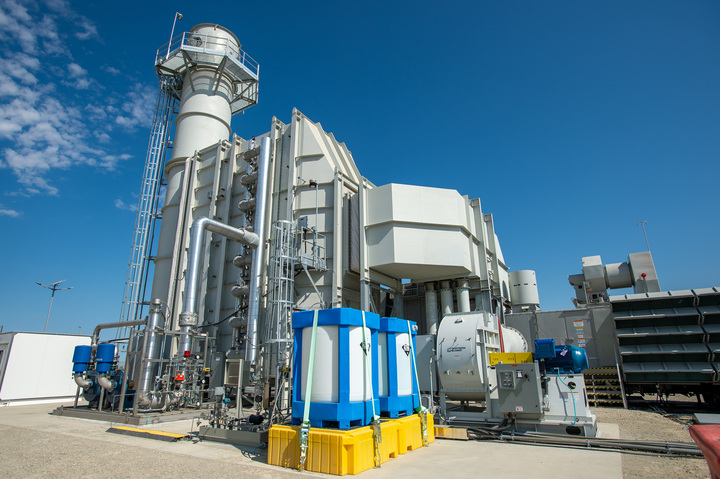
2. The first-of-a-kind installation on GE TM2500 gas turbines reduced NOx emissions by more than 90% to 2.5 ppm and reduced CO emissions to 4 ppm. Courtesy: Jonathan Wong / California Department of Water Resources
GE said the system is “fully modular” and requires no welding. The standard design is applicable to both TM2500 and LM2500XPRESS gas turbines. Installation takes about two weeks, but there is about a six-month lead time to source the equipment. The system can be used for multiple fuel applications, including natural gas, distillate, and hydrogen.
100% Hydrogen Capability on the Horizon
Many experts are predicting widespread growth in the use of hydrogen as a fuel for power generation. Some see it as a vital energy storage mechanism, as renewable energy from wind and solar could be used to produce hydrogen through electrolysis rather than curtailing output when system demand is less than supply.
GE, like most other gas turbine manufacturers, has been testing blends of hydrogen and natural gas in its units. The company reports that the TM2500 is capable of burning 75% hydrogen today, while maintaining emissions within required limits, and it expects its mobile gas turbines to be 100% hydrogen capable in the future.
GE’s TM2500 is derived from the company’s jet-engine technology, which is used by many of the world’s airlines. The units are typically mounted on a wheeled trailer for high mobility. GE says there are more than 300 TM2500 units installed around the world, many of which are providing a “baseload bridge” to permanent power installations, or for generating backup/peak power in the wake of natural disasters, plant shutdowns, grid instability, or in isolated locations.
“These temporary generators are an important last resort resource that can be relied on to support electricity reliability across California during grid emergencies,” CEC Commissioner Siva Gunda said in a statement when the Yuba City and Roseville units entered service.
The original project cost for the four temporary emergency generator units was $196 million, which was paid for through emergency funds. The units were expected to remain available through Dec. 31, 2023. It’s unclear if the operational timeline has changed as a result of the new emissions system upgrade.
